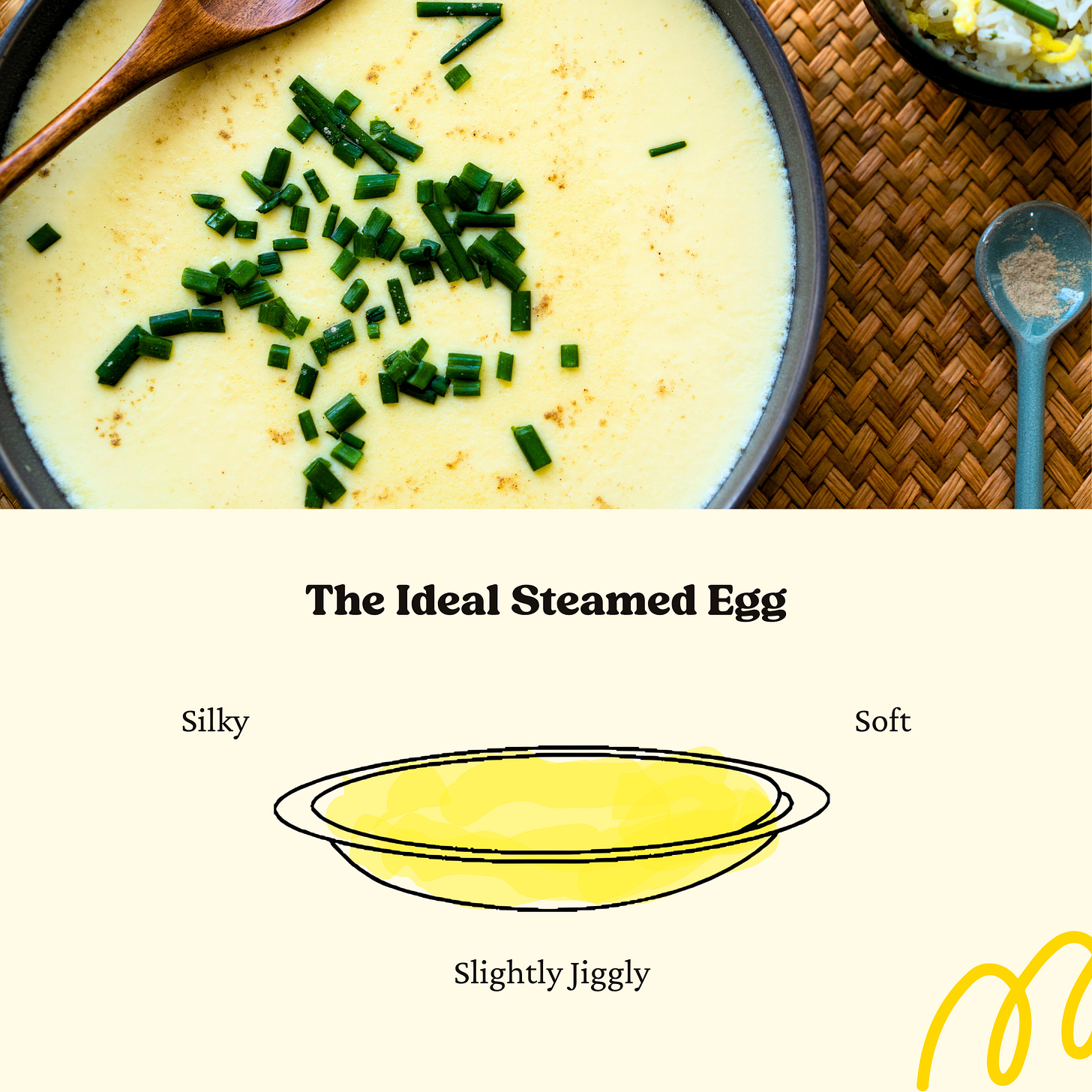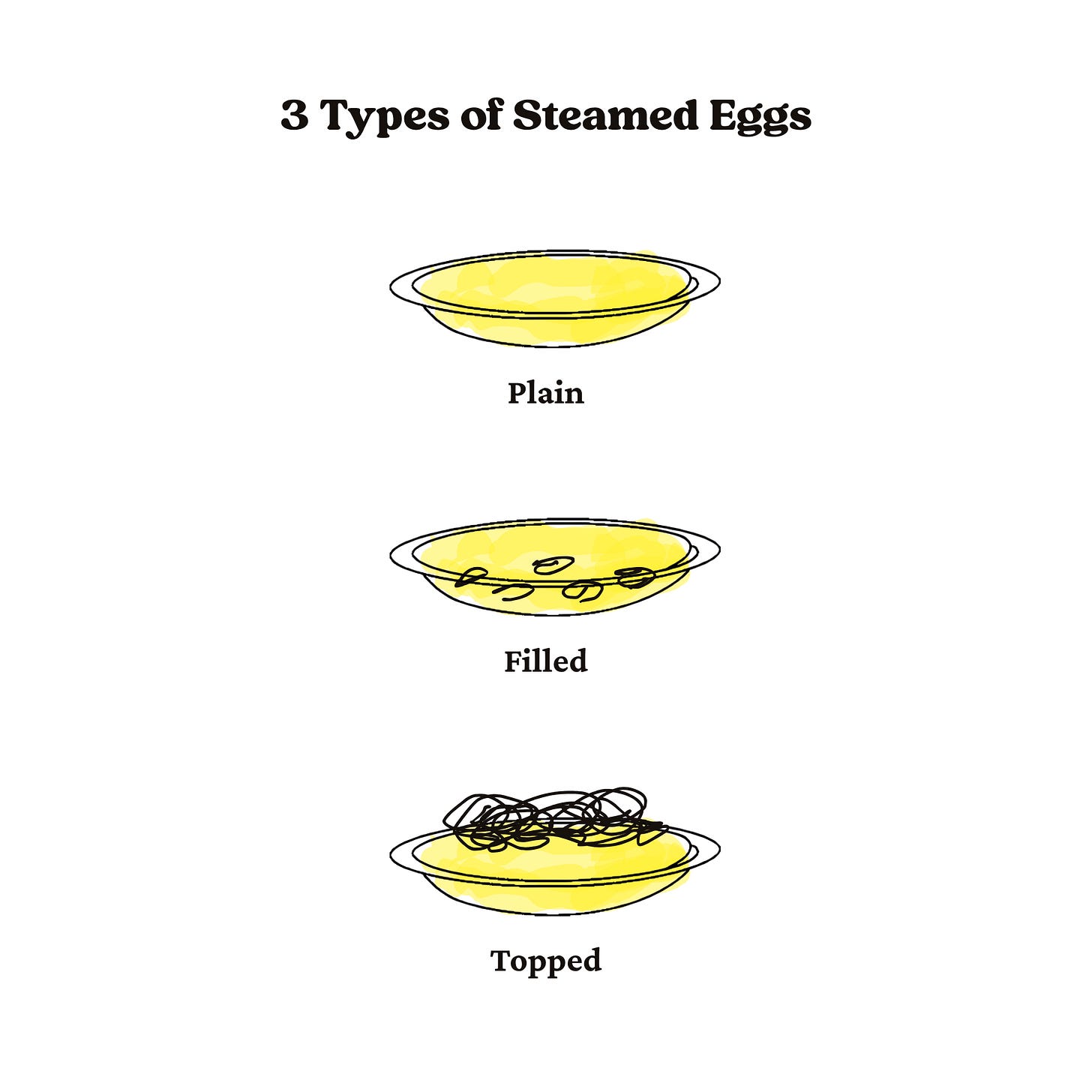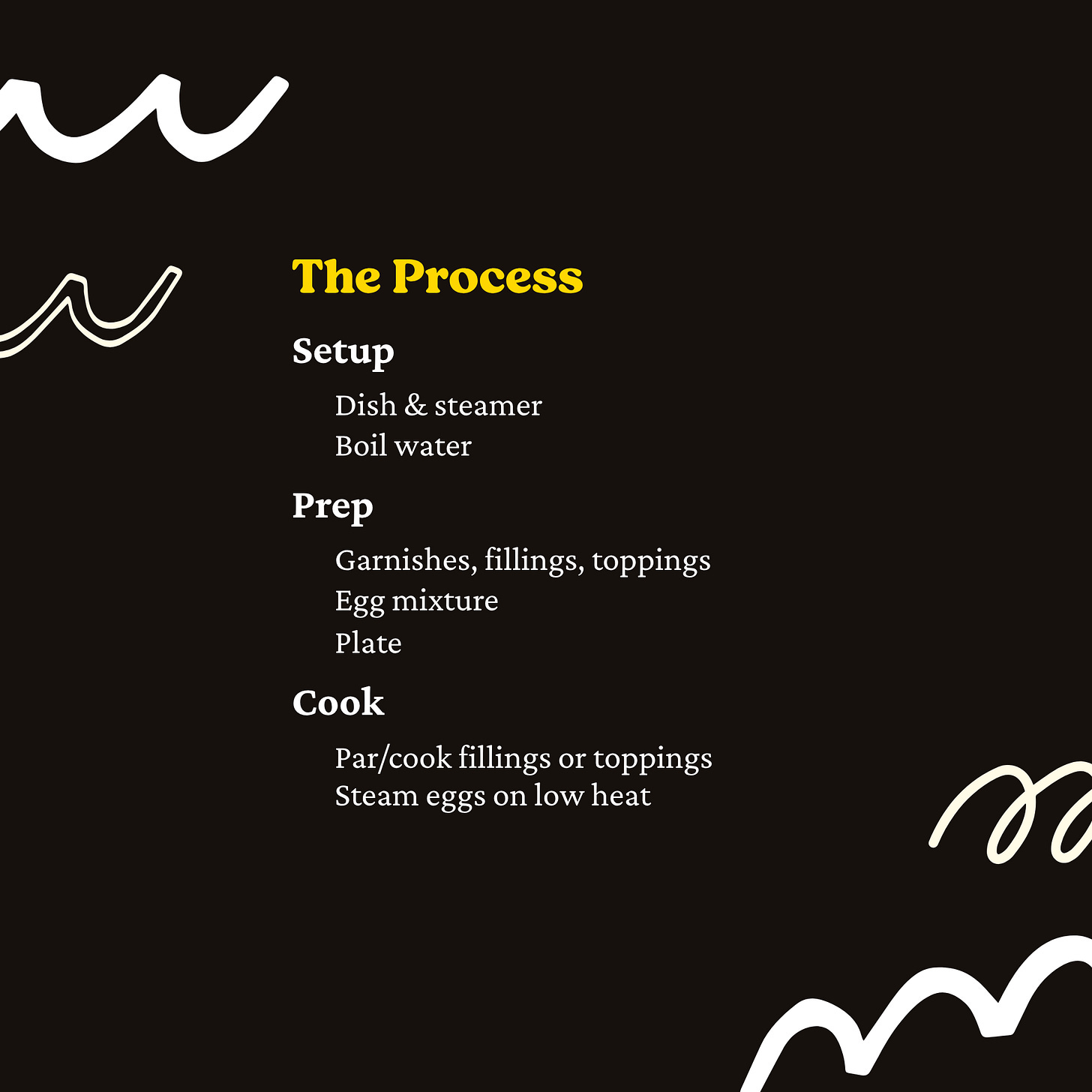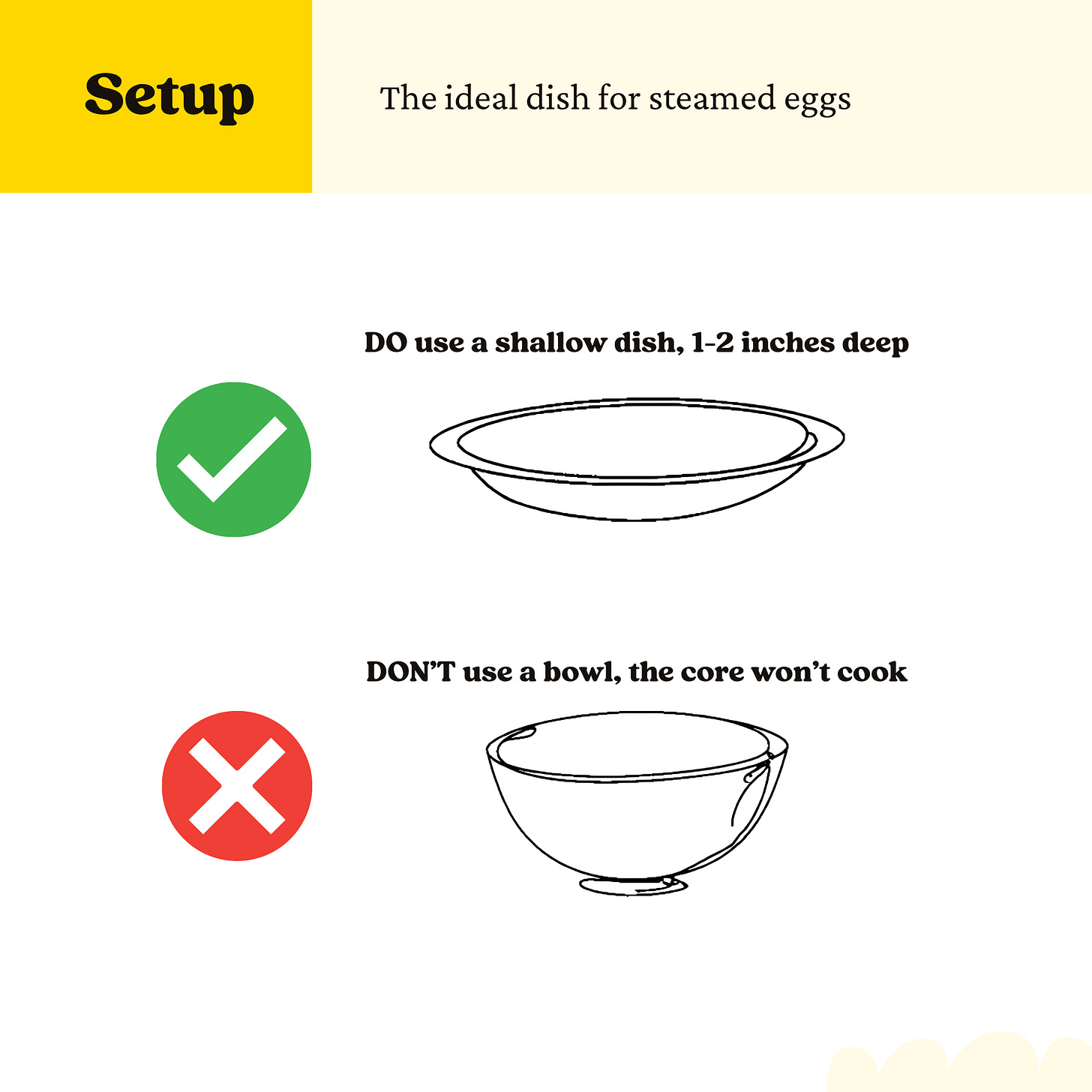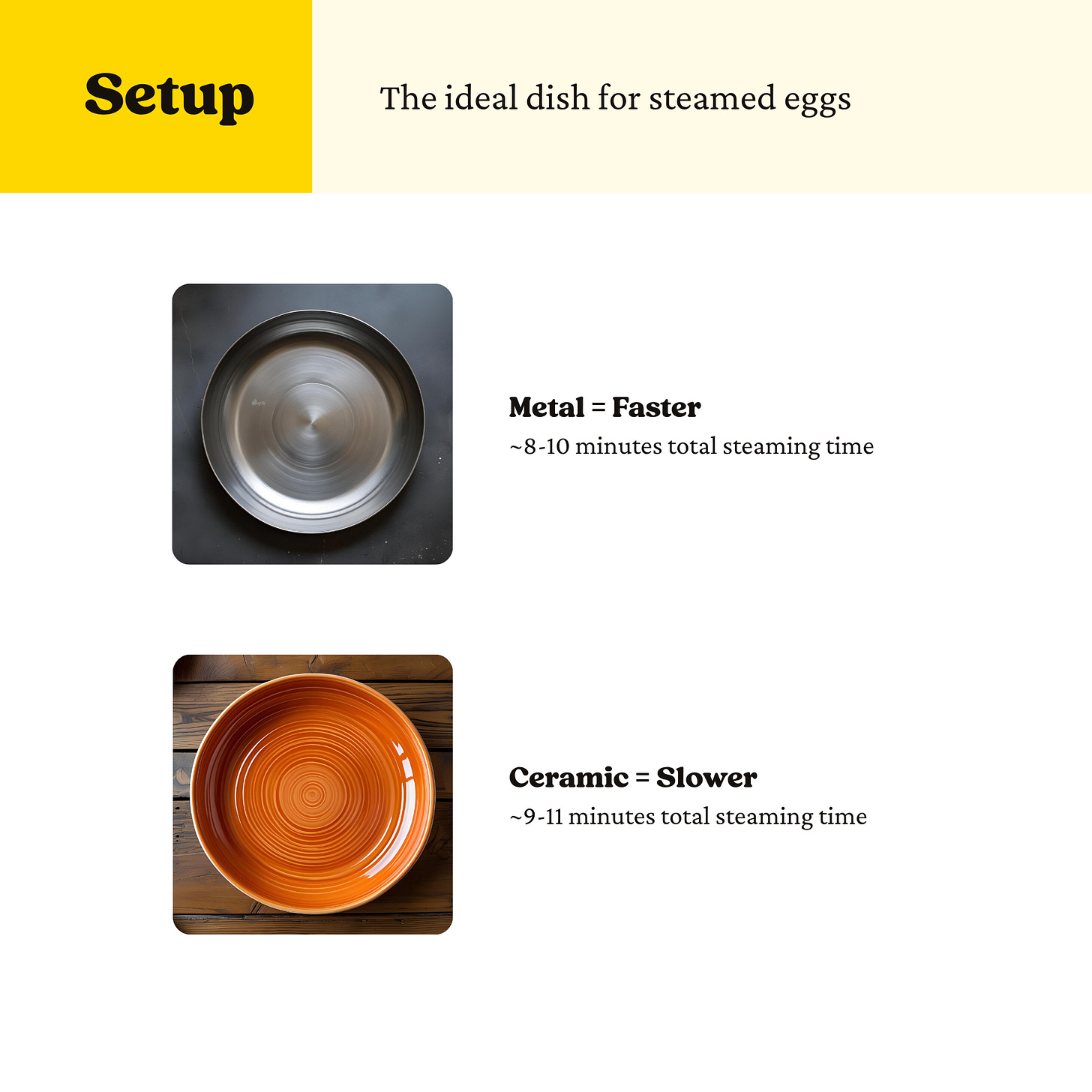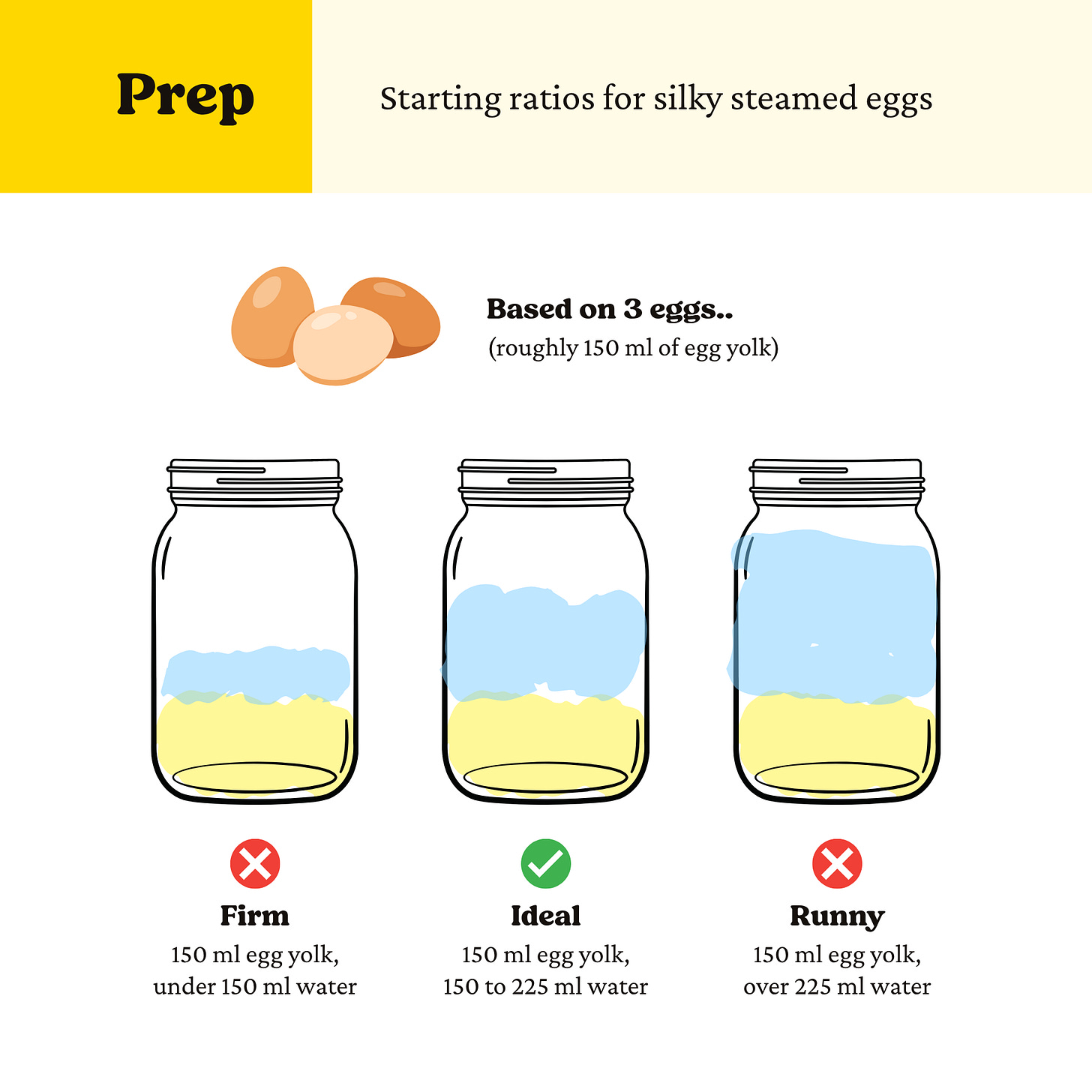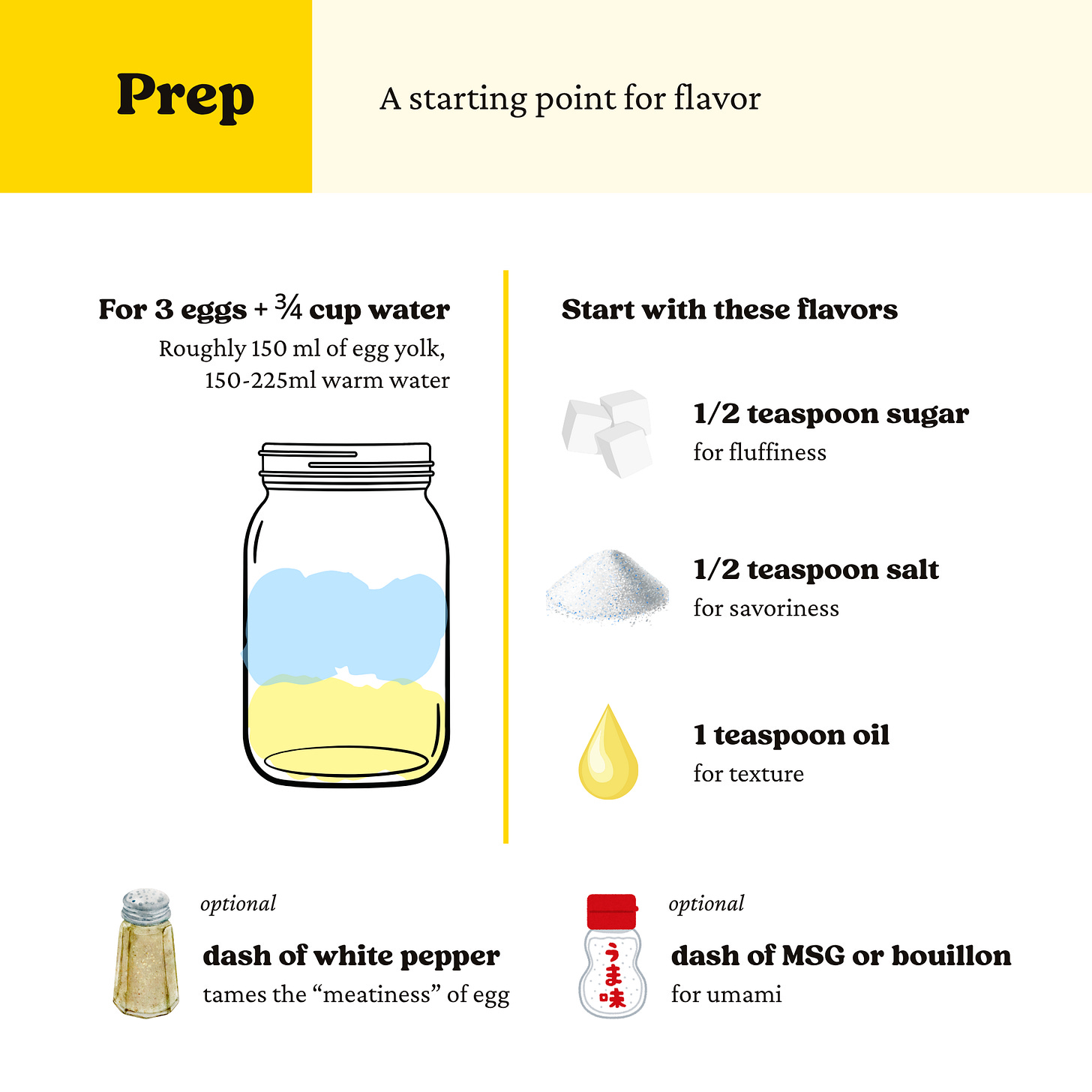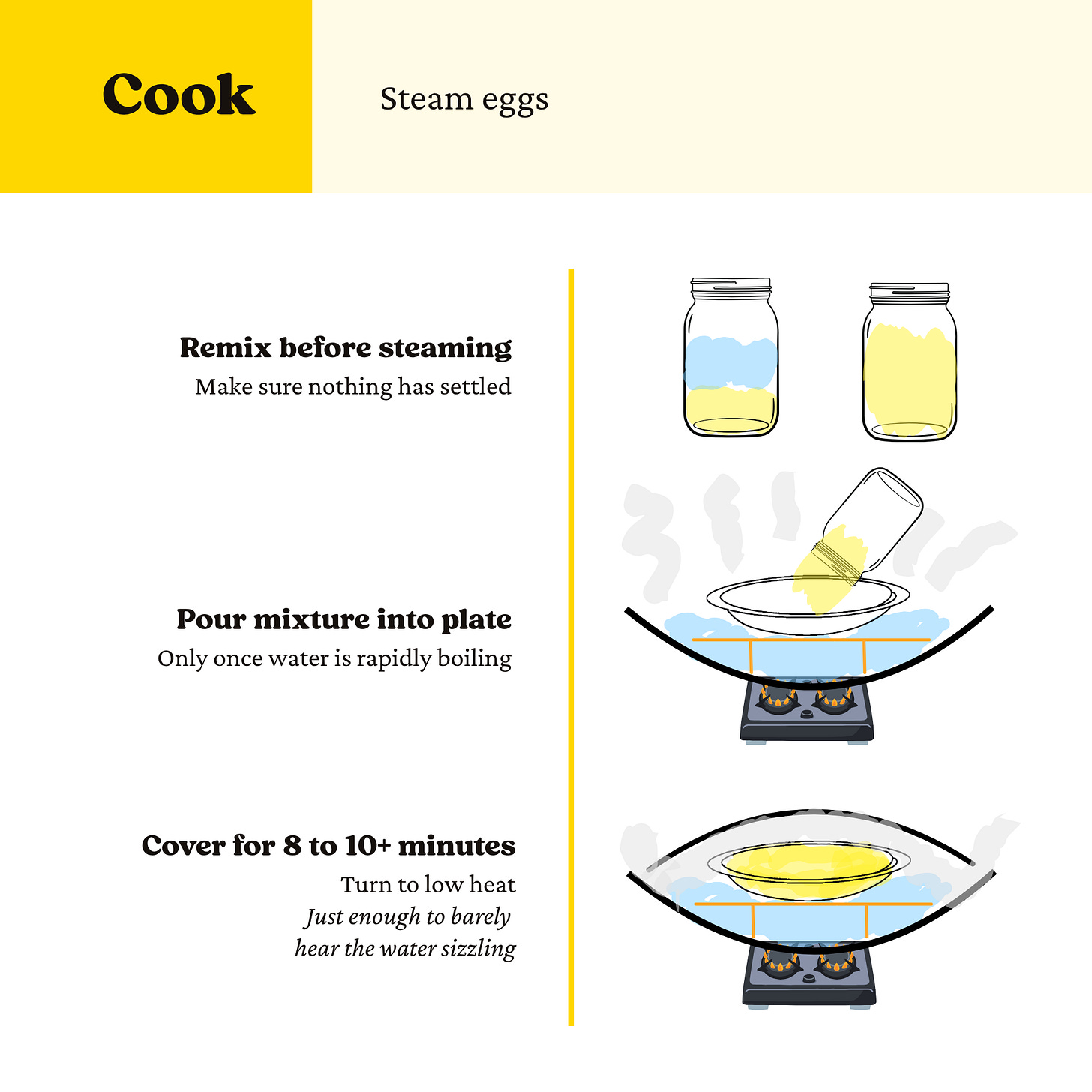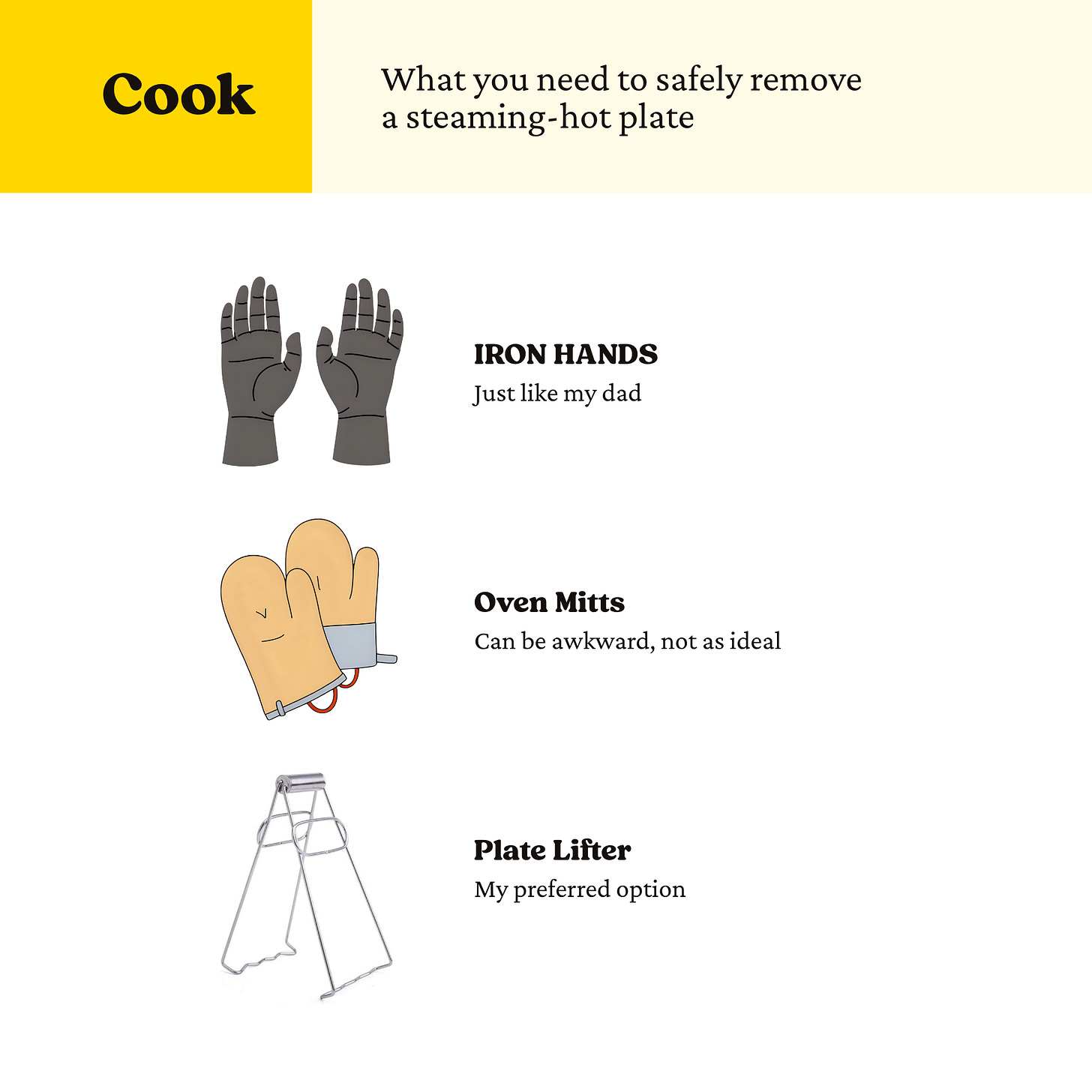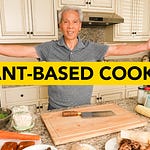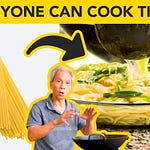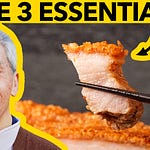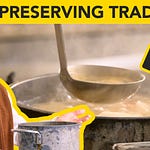Welcome to issue #002 of our Cookbook Chronicles. Each week, I send 1 newsletter to help you become a better Chinese chef. If you want to help shape our efforts in making a timeless Cantonese cookbook, join our community of 350+ members. You’ll get access to our weekly Cookbook Confidential (with private guides, drafts, and recipes) and our private group chat.
When we started planning out our cookbook, I KNEW Steamed Eggs had to go into the book. It’s like a warm hug in your mouth - a bite of soft, silky, savory, and comforting eggs.
I’ve also been drawn to the idea of the “Mother Recipe”, which is like a blueprint or a template for a classic dish with a myriad varieties.
So… I present to you…
This post is packed with tips. If you’re viewing from your email inbox, it might get cut off, so click here to read the entire thing.
Mother Recipe: Steamed Egg
The Different Types of Steamed Eggs
I actually did not know this until our cookbook shoot, but there are 3 different types of Steamed Eggs:
General Overview
Our video explains this in much more detail, but here’s the general process:
Important Considerations
Setup
Plate Selection - Shallow dishes work best. Metallic dishes cook faster.
Steamer Setup - You’ll need a cookware, a lid, and something to elevate the dish.
Preparation
The Perfect Ratio
Ideal Ratio – This depends on your preferences and the use case, but my dad says a good starting point is somewhere between a 1:1 ratio to a 1.5:1 of water to egg. Don’t go above a 2:1 ratio of water to egg, or it’ll be too runny.
Flavors
This is all down to your personal preferences. This also depends on how many eggs and how much water you’re using, as well as what other fillings or toppings you’re incorporating.
A good starting point for 3 large eggs (around 150 milliliters of yolk) and 150 milliliters of water is about ½ teaspoon of salt, ½ teaspoon of sugar, and 1 teaspoon of oil. Optionally, you can add a dash of white pepper or use chicken bouillon, MSG, or other flavors.
Cooking
The main goal here is to minimize the amount of time you need to bring the eggs to the ideal texture. Cooking too long or at too high of a heat results in harder, uneven textures.
After about 8-10 minutes (or longer if there are fillings with higher heat capacity like tofu), the eggs should be done.
Check more often towards the tail end of the cook time and wiggle the wok every 30 seconds or so. We’re paying attention to how much the egg jiggles. If it jiggles easily, like Jello, it’s not done. If it only jiggles a bit (maybe 1-2 millimeters if we were being precise), it’s done.
Safely Removing the Plate
Uncover the wok. It’s fine to leave the plate in, uncovered, while you garnish or if you have other things to tend to.
When you’re ready, clear or identify a landing zone for the plate.
It’s helpful to buy plate lifters if you plan on making steamed dishes often. My dad has iron hands and can just use his bare hands, but for us mortals, towels wrapped around your fingers will help.
The Recipes
For this cookbook shoot, my dad showed me 5 (!) different Steamed Egg recipes.
Two of these are already on our blog!
Plain Steamed Eggs: https://madewithlau.com/recipes/steamed-egg
Steamed Eggs w/ Minced Pork: https://madewithlau.com/recipes/steamed-egg-minced-pork
There are three more that we haven’t yet published:
Steamed Eggs with Dried Shrimp
Steamed Eggs with Tofu & Shrimp
Combination Steamed Eggs (Chicken & Shrimp Gravy)
For now, we have to keep these recipes private — just for paid subscribers. Some or all of these recipes may go into our cookbook.
Steamed Eggs with Dried Shrimp
Ingredients
Listen to this episode with a 7-day free trial
Subscribe to Made With Lau to listen to this post and get 7 days of free access to the full post archives.



